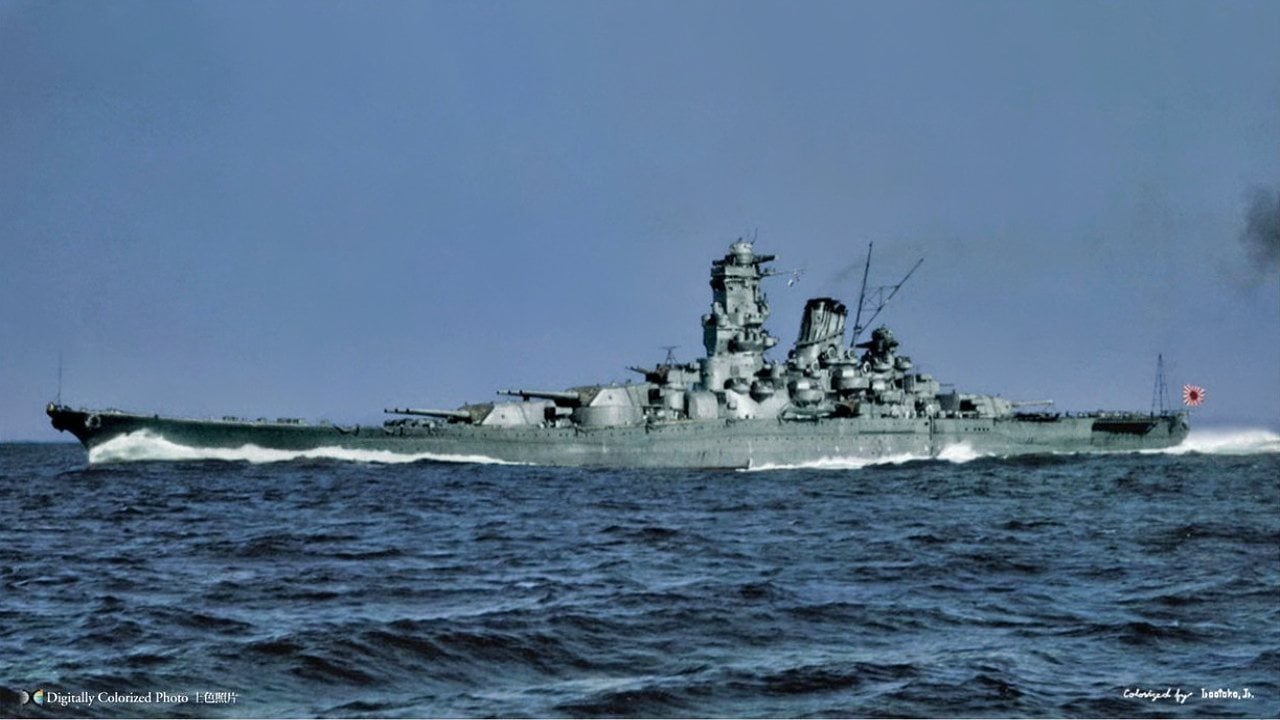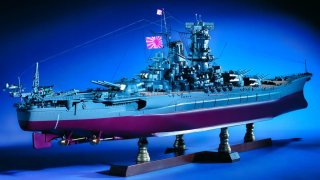Yamato-Class: Japan Built the Biggest Battleship Ever (18-Inch Guns)
The Yamato-class battleships, constructed by Imperial Japan during World War II, were the largest and most heavily armed battleships ever built.
Summary and Top Points You Need to Know: The Yamato-class battleships, constructed by Imperial Japan during World War II, were the largest and most heavily armed battleships ever built.
-Despite their formidable 18-inch guns and thick armor, all three completed ships—Yamato, Musashi, and Shinano—were sunk by U.S. forces during the war. The Musashi was destroyed in 1944, the Yamato in 1945, and the Shinano, which had been converted into an aircraft carrier, was sunk just nine days after commissioning.
-These ships, despite their immense power, proved to be ineffective against American naval air power.
Yamato-Class Battleships: Japan’s Naval Giants That Failed in WWII
When Imperial Japan’s Yamato-class battleships were first laid down prior to World War II, they were the heaviest of their kind ever built. These great warships were expected to lead Japan’s navy to victory during the war, but all three were sunk by U.S. forces.
Post-War Buildup
A naval arms race ramped up after World War I ended. The UK, France, Japan, Italy and the U.S. penned the Washington Naval Treaty in 1922 to prevent the race to secure bigger and better warships from leading into another full-fledged war. The treaty placed limits on the construction of battleships, battlecruisers, and aircraft carriers. It specifically called on each signatory to maintain a set warship tonnage, enabling the U.S. and United Kingdom to maintain 500,000 tons, Japan 300,000 tons, and France and Italy 175,000 tons each.
While the treaty guidelines remained in place for more than a decade, Japan announced its intention to withdraw in 1936. The withdrawal came after the Japanese sought formal equality in naval construction limits, but the U.S. and UK would not budge. The Japanese government began an ultranationalist militant turn around this time and wanted to expand its empire.
Following Japan’s departure from the treaty, an escalator clause kicked in allowing signatories to revert back to previous armament and tonnage use. Japan had already left the League of Nations two years prior over the Mukden Incident, along the way renouncing its obligations to all associated treaties. Japan eyed colonies in the Pacific region and Southeast Asia as part of its expansionist ambitions, and the U.S. became the largest roadblock to the empire’s success.
Introducing the Yamato-class Battleships
Once Japan fully isolated itself from the WWI allied powers, its engineers got to work to construct bigger and more formidable warships. Five vessels were initially planned to make up the Yamato class, but only three were completed. The lead ship of the class, the Yamato, was commissioned in 1941, just days after Japan’s deadly attack against America at Pearl Harbor. The Musashi was the next ship commissioned, in 1942, followed by the Shinano in 1944. The remaining vessels, Warship Number 111 and Warship Number 797, were later canceled.
Perhaps the most significant new feature of the Yamato-class warships was their 18-inch guns. Even the latest vessels at that point carried no bigger than 16-inch guns. While the difference may seem pretty insignificant, the larger guns were associated with an array of technical difficulties stemming from their increased weight. The Yamato ships’ armor-piercing shells weighed roughly 3,200 pounds each and could be fired at targets positioned more than 25 miles away at 40-second intervals.
On paper, the Yamato class’ armament was superior to that of the U.S. Navy’s battleships. These ships were also well designed to withstand aerial bombardment, featuring extremely thick main armor decks to defend against heavy bombs dropped from high altitudes.
The Sinkings
The Yamato-class ships were clearly not as indestructible as Imperial Japan had hoped. In October 1944, the Musashi was destroyed after receiving as many as 17 bomb and 19 torpedo hits during the Battle of Sibuyan Sea. More than 1,000 sailors died during this incident, and the Musashi sank to the bottom of the ocean.
The Yamato similarly succumbed to U.S. bombings. In April 1947, the lead ship sank to the ocean floor after receiving 10 torpedo and 7 bomb hits from American aircraft carriers. The vast majority of the Yamato’s crew perished when she capsized.

In 1942, following Japan’s defeat at Midway, construction on the third Yamato-class ship, Shinano, was suspended. The Japanese navy instead worked to convert the warship into an aircraft carrier. Just nine days after the Shinano was commissioned, she was struck by four torpedoes launched from the USS Archerfish. Within a few hours, she became the third and final Yamato-class ship to capsize and sink.
In hindsight, the Yamato-class ships were not the best investment made by Imperial Japan. These battleships may have been deadly on paper, but they failed to surpass American naval forces in combat.
About the Author: Maya Carlin
Maya Carlin, National Security Writer with The National Interest, is an analyst with the Center for Security Policy and a former Anna Sobol Levy Fellow at IDC Herzliya in Israel. She has by-lines in many publications, including The National Interest, Jerusalem Post, and Times of Israel. You can follow her on Twitter: @MayaCarlin.


